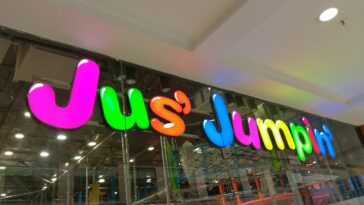In today’s competitive business world, creating a lasting impression on customers is crucial. One of the most effective ways to do this is through signage design. Whether you’re running a retail store, a restaurant, or an office, your signage is often the first point of contact with potential customers. A well-designed sign not only grabs attention but also reflects the identity of your brand and communicates essential information clearly and effectively.
Why Is Signage Design Important?
Effective signage design plays a vital role in branding and marketing. When done right, signage can increase visibility, improve the customer experience, and even boost sales. Here’s why you should pay close attention to your signage:
- Brand Recognition: A well-designed sign helps establish brand recognition and fosters trust. When customers see a clear, professional, and attractive sign, it signals that your business is established, reliable, and confident. Your brand’s logo, colors, and typography should be consistent across all signage to create a cohesive image.
- First Impressions Matter: The first impression a customer has of your business often comes from your signage. Whether it’s a storefront sign, a wayfinding sign, or a promotional banner, it’s the visual introduction to your company. A poorly designed sign could turn potential customers away, while an appealing, clean, and stylish sign can invite them in.
- Navigational Ease: Signage also serves a practical function in helping customers navigate your business location. Effective signage design helps people find their way inside your store, locate specific departments, and easily read essential information like hours of operation or promotions. This kind of clarity improves the overall customer experience.
- Effective Communication: Signage communicates more than just your company’s name. It can be used to highlight services, sales, promotions, and directions. Thoughtfully designed signs ensure that your message is communicated in a clear and concise manner, helping to engage your customers in a meaningful way.
Key Elements of Good Signage Design
For signage design to be effective, it’s important to consider several elements:
- Simplicity: Keep your design simple and easy to understand. A cluttered sign with too much information will confuse potential customers. Focus on the key message you want to communicate, such as your business name or a specific promotion. Use clean fonts and a clear hierarchy to guide the viewer’s eye.
- Visibility: The sign should be visible from a distance, especially for outdoor signs. Choose colors that contrast well and make the text legible from afar. Additionally, think about the placement of the sign. It should be easy for people to spot, whether it’s on the street, inside your store, or on a digital screen.
- Brand Consistency: Your signage design should reflect your brand’s identity. Use the same fonts, colors, and logos you use in other marketing materials, like your website or business cards. This consistency ensures that your brand is easily recognizable and that all your communications align with your business’s message.
- Material Quality: The materials you choose for your sign should be durable and fit the location where the sign will be placed. For example, outdoor signs need to be weather-resistant, while indoor signs can be made from materials that match the decor. Quality materials ensure that your sign looks professional and lasts longer.
- Size and Scale: The size of the sign should match the location and purpose. A large, bold sign works well for outdoor spaces, while smaller, more detailed signs are suitable for interior use. It’s essential to choose a size that attracts attention without overwhelming the surrounding environment.
Types of Signage Design
There are various types of signage design options depending on your needs:
- Outdoor Signs: These are the first things potential customers will see when they approach your business. Outdoor signs include storefront signs, billboards, and banners, and they should be designed to capture attention.
- Wayfinding Signs: These are essential for large establishments like malls, hospitals, or office buildings. Clear wayfinding signage ensures visitors can easily navigate through the premises.
- Interior Signs: These signs are used inside a building and include directional signs, menu boards, and informational plaques. Interior signage helps create a pleasant and organized atmosphere.
- Digital Signage: Digital signs offer dynamic content, from scrolling text to high-resolution videos, and are perfect for engaging customers with real-time information, promotions, and updates.
Conclusion
Signage design plays a pivotal role in how your customers perceive your brand, and it’s often the first interaction they have with your business. A well-crafted sign not only boosts brand recognition but also enhances the customer experience. Whether you need outdoor signage, wayfinding signs, or digital displays, taking the time to invest in professional signage design can yield significant benefits for your business.
To explore expert signage design services that can help elevate your brand, visit Urban Glow Signage and discover how they can help you create impactful, eye-catching signage that leaves a lasting impression.




 No products in the cart.
No products in the cart.